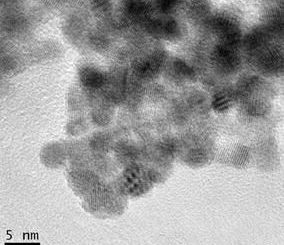
Solvent effects on the photoelectrochemical properties of WO3 and its application as dopamine sensor
Abstract: Nanostructured WO3 films were produced by a simple method using ammonium tungstate dissolved in different solvents: ethanol, PEG 300, and a mixture of ethylene glycol with PEG 300. The suspensions were deposited on an FTO substrate by drop casting method and calcined at 500 A degrees C in air atmosphere. The films were characterized by scanning electron microscopy (SEM), energy-dispersive X-ray spectroscopy (EDS), X-ray diffraction (XRD), UV-Vis diffuse reflectance spectroscopy, and photoelectrochemistry measurements. FTO substrates were fully covered by a thin and adherent WO3 film, which presented a nanostructure with particle diameter of 30-80 nm. XRD confirms the monoclinic structure of WO3. Ethanol samples presented higher photocurrent for water oxidation, compared to other solvents. However, these electrodes showed high fragility and the response did not present repeatability. High adhesion was obtained with PEG as solvent (by itself or mixed with ethylene glycol). In addition, WO3 was applied as a photoelectrochemical sensor to detect dopamine under visible light irradiation. The developed sensor showed photosensitivity to dopamine with reproducibility, stability, wide linear range, and low detection limit (0.30 mu M).
Author(s): Alves, SA; Soares, LL; Goulart, LA ; Mascaro, LH.
JOURNAL OF SOLID STATE ELECTROCHEMISTRY
Volume: 20 Pages: 2461-2470 Published: SEP 2016
PDF: Solvent effects on the photoelectrochemical properties of WO3 and its application as dopamine sensor
DOI: 10.1007/s10008-016-3144-4




